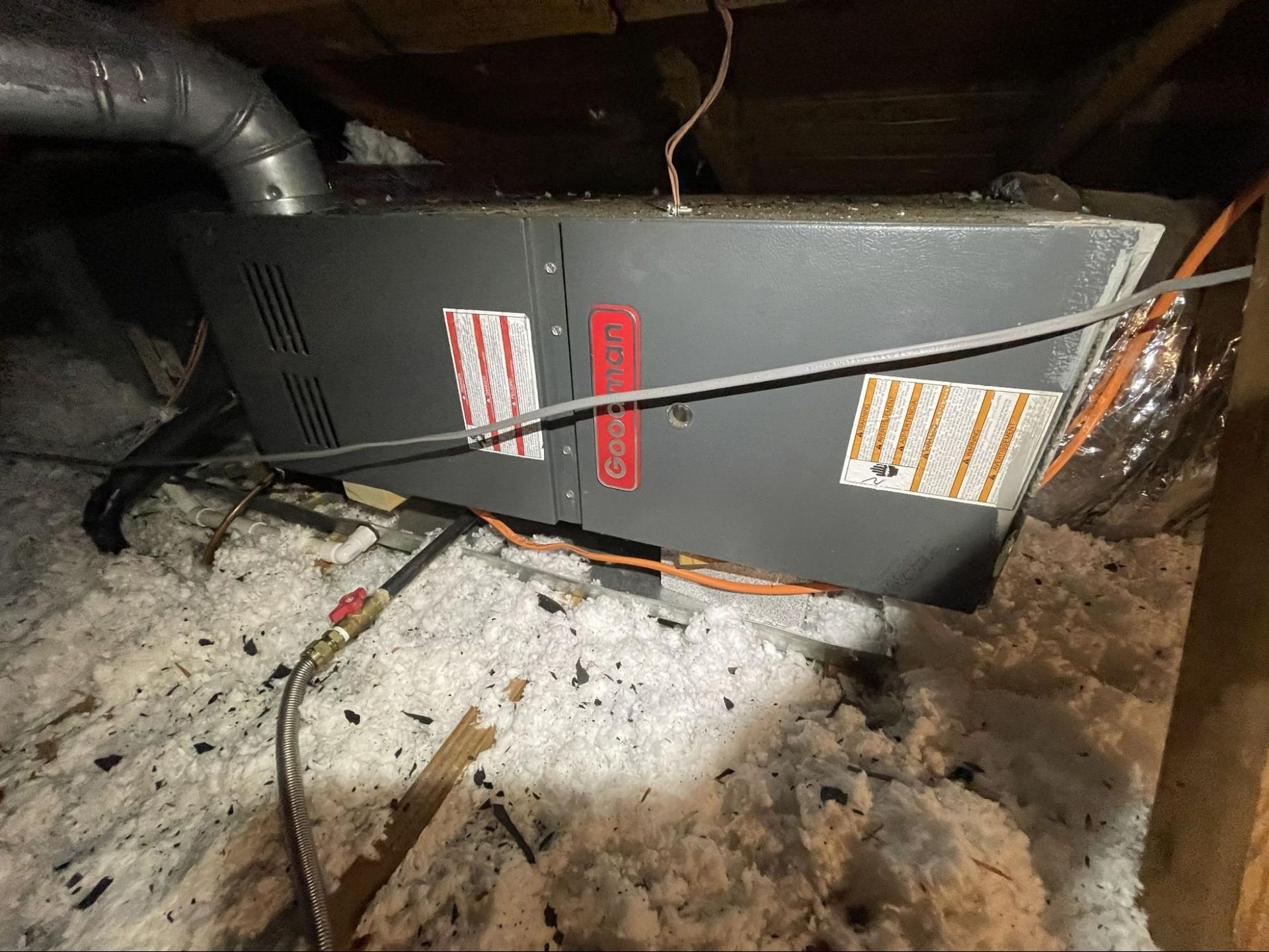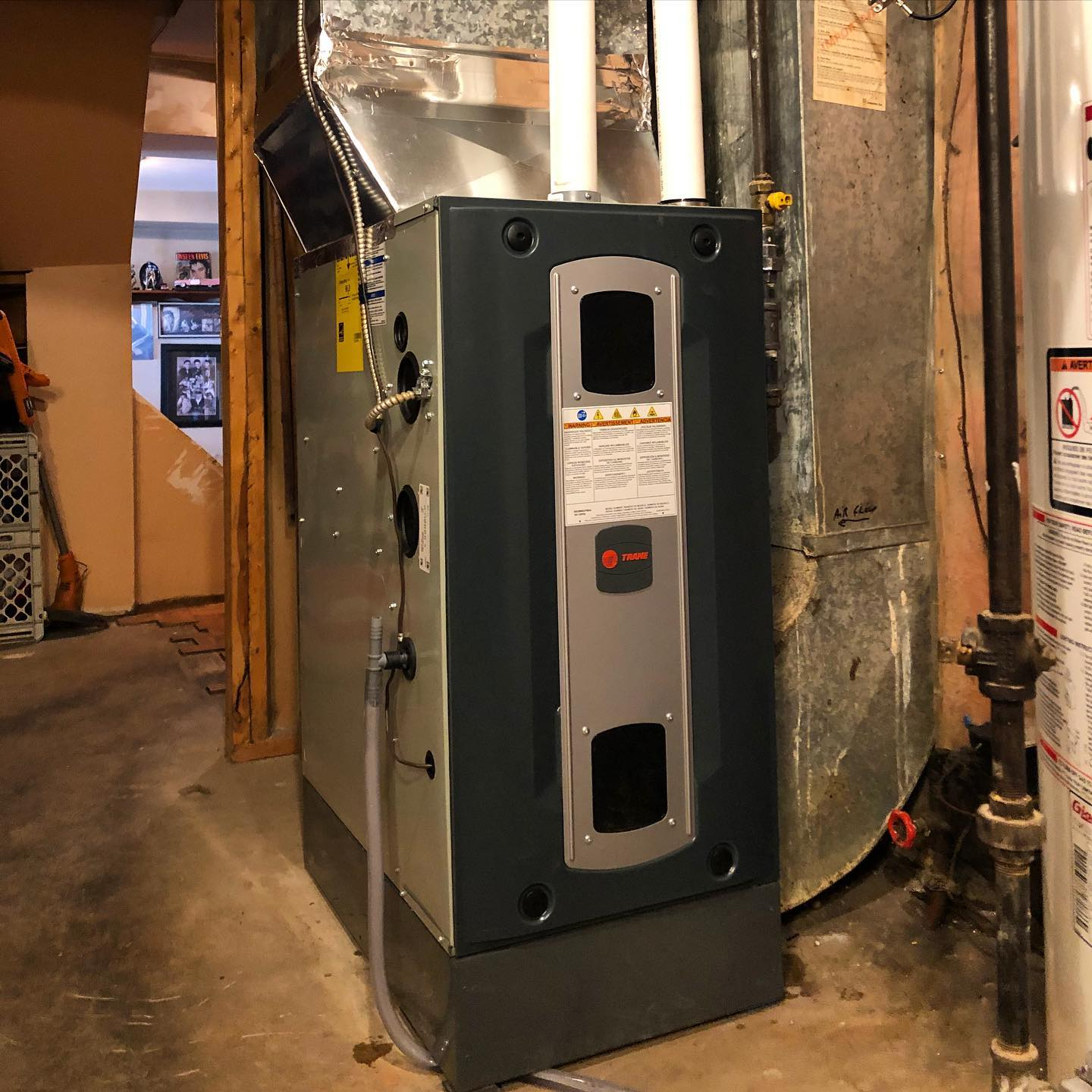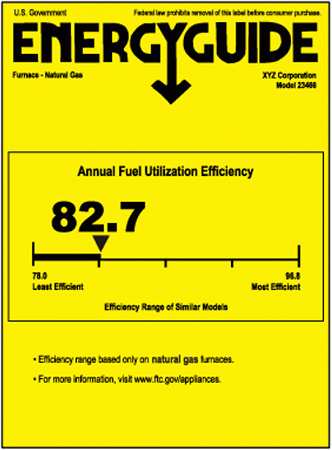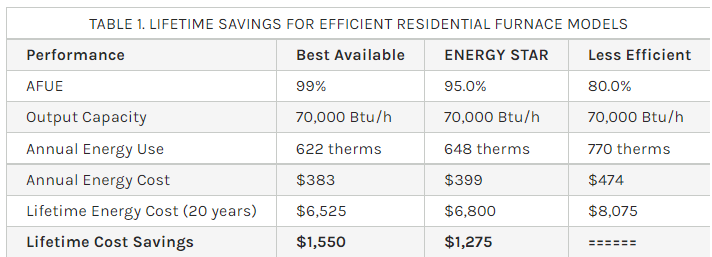80% efficiency vs. 95% high-efficiency furnace: Pros and Cons of High-efficiency furnaces
How is efficiency measured (AFUE)?
Differences between an 80% AFUE and a high-efficiency furnace
The 80% AFUE Furnace

The high-efficiency Furnace (90-99% AFUE)

How do you determine what type of furnace you have?
- You can find your furnace AFUE rating on its Energy Guide Stickers. See the below image as an example.
- The manual for your furnace (included with your furnace or found online) will mention AFUE in the product specifications.
- Looking at the furnace exterior: High-efficiency furnaces have two PVC vents; an intake and an exhaust vent. 80% AFUE units will only have one metal exhaust vent and metal grates on the furnace for air intake.
- Looking inside the furnace (internal components): High-efficiency furnaces will have sealed combustion chambers while 80% AFUE will have open combustion chambers.

Which system should I install?
- Upfront cost of the system is less
- Labor and other installation costs are less - the system can easily be installed if the current system is an 80% AFUE furnace
- Long-term service expenses are less - less complicated internal components means fewer and cheaper service calls.
- Less energy efficient - more greenhouse gas emission
- Higher utility bills - ~$120-$200 more per year
- Fewer opportunities for tax rebates and other incentives during installation
High-Efficiency Furnace (90%-99% AFUE)
Pros -
- Lower utility bills - $120-$200 less per year
- High energy efficiency - reduction in greenhouse gas emissions
- More federal and state tax incentives and rebates available
Cons -
- Upfront system cost is higher -The unit itself cost more since there is a sealed combustion chamber, secondary heat exchanger, condensation collection, additional safety switches, and higher efficiency blower motors
- Labor and installation costs higher - PVC intake and exhaust vents need to be added significantly increasing labor and material costs
- Higher long-term service expenses - Complicated system and advanced parts mean more expensive service when the system is having issues
There are several other things you should consider like the increasing cost of natural gas and lifetime savings for efficient residential furnaces. Below is a chart from the US Department of Energy that goes over the potential lifetime savings of upgrading to an Energy Star-rated high-efficiency furnace. They conclude that anywhere from $1,275-$1,550 can be saved over the lifetime of the furnace.

United States Department of Energy
What this chart does not take into account is added labor and service charges for high-efficiency systems, which can greatly reduce these savings. You should consider all pros, cons, and potential future expenses when choosing your next furnace.
